After the US and Europe banned imports, Russian crabs shifted to Asia, with purchases from Japan and China increasing sharply.
Prices for imported crabmeat are falling sharply in Japan thanks to increased supplies from Russia. Russian snow crab costs about 2,000 yen ($14) per kilogram on the wholesale market, down 33% from the 2022 average. Meanwhile, the country’s red king crab costs 5,000 yen ($34) per kilogram, 38% cheaper.
At the Uoriki food chain, all crabs are sourced from Russia, with import prices 20% to 30% cheaper than last year. Online seafood wholesale marketplace Morigen Shop offers imported crabs about 20-30% cheaper than last year.
Last year, Japan's crab imports reached 74.9 billion yen (508 million USD). Russian crab alone reached 48.5 billion yen (330 million USD), up 28%, accounting for 64.8% of the market share. This year, of the 35.8 billion yen (244 million USD) crab import turnover in the first three quarters of the year, Russian crab accounted for 24.6 billion yen (167.5 million USD), increasing the market share to 68.8%.
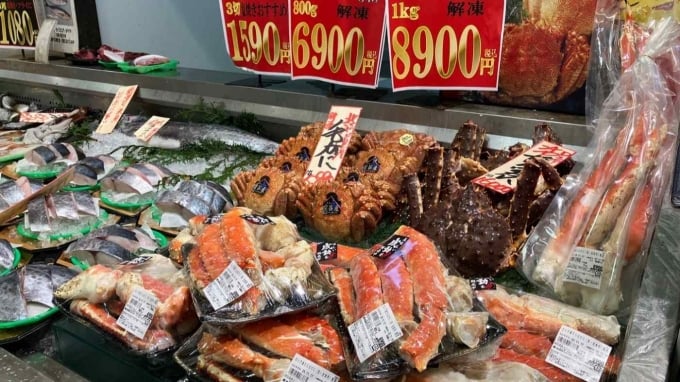
A crab and seafood stall in Japan. Photo: Nikkei
The influx of Russian crab has increased supply, causing prices of Canadian and Norwegian crab to fall. Canadian crab is now priced at 1,800 yen ($12.2) per kilogram, and Norwegian crab is priced at 1,900 yen ($13) per kilogram, down 32% and 51%, respectively, from last year's average prices.
Russian crabs have begun shifting exports to Asia after being embargoed by the US and Europe. Japan will only increase tariffs on Russian seafood in April 2022, but will not be banned from entering.
The US has banned wholesale sales of Russian seafood from March 2022. The country used to be Russia's largest crab market, accounting for half of its exports. Meanwhile, as a major supplier, the Japanese Fisheries Agency said the ban on Russian crab would have a major impact on the country's seafood processing industry.
Tokyo merchant Tsukiji Kanisho opened a crab restaurant in March using red king crab caught in the Barents Sea, off the coast of Russia and Norway. The United States used to pay more than other countries for that particular crab, but now it is more accessible and cheaper, he said.
If the ban is implemented, Japan will not have an easy time finding large supplies at good prices. Alaskan crab has declined, and fishing for some species has been banned in areas such as the Bering Sea and the Aleutian Islands since 2022. A source told Nikkei that there are few alternatives to Russia in securing the necessary food. "Despite the political risks, trade with Russia may increase in the future," the source predicted.
Russia has reoriented its crab exports to Asia after the EU and US markets were closed due to Western sanctions, according to recent statements by some of its leading crab producers. Last year, Russia’s live crab exports to China and South Korea increased by 20% to 30%. Meanwhile, frozen crab supplies also increased 2.6 times and 3 times in South Korea and China, respectively.
Russian Crab, one of Russia's largest crab producers, told the Russian newspaper Vedomosti that the Chinese market accounted for an average of 27% of the company's annual sales between 2020 and 2023. They forecast further growth in exports this year.
Russian crab is in high demand in the Chinese market, but exporters say locals have little experience in processing it. To expand consumption, producers plan to promote it through crab processing classes.
"During the Russian Crab Festival in Shanghai (October 2023), we found that customers were interested in cooking methods and recipes. Therefore, during the promotion, we often held high-end culinary classes," the company said.
Phien An ( according to Nikkei, Vedomosti)
Source link


![[Photo] Hanoi morning of October 1: Prolonged flooding, people wade to work](https://vphoto.vietnam.vn/thumb/1200x675/vietnam/resource/IMAGE/2025/10/1/189be28938e3493fa26b2938efa2059e)
![[Photo] Keep your warehouse safe in all situations](https://vphoto.vietnam.vn/thumb/1200x675/vietnam/resource/IMAGE/2025/10/1/3eb4eceafe68497989865e7faa4e4d0e)
![[Photo] President of the Cuban National Assembly visits President Ho Chi Minh's Mausoleum](https://vphoto.vietnam.vn/thumb/1200x675/vietnam/resource/IMAGE/2025/10/1/39f1142310fc4dae9e3de4fcc9ac2ed0)



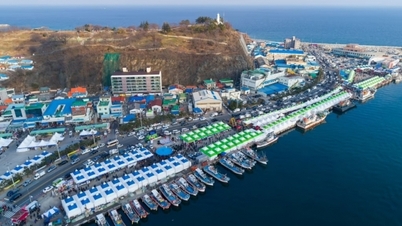





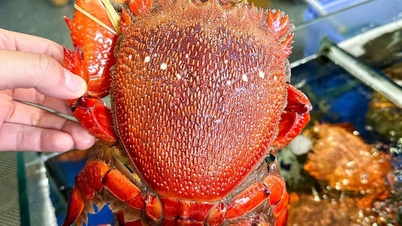


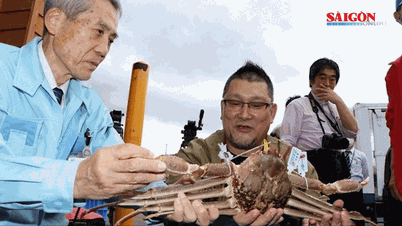

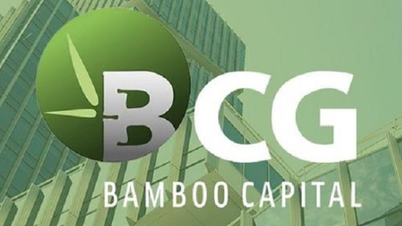







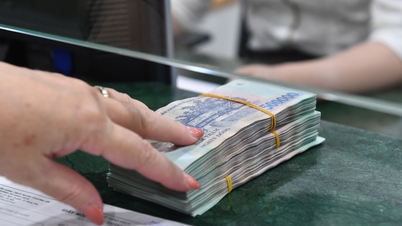






















































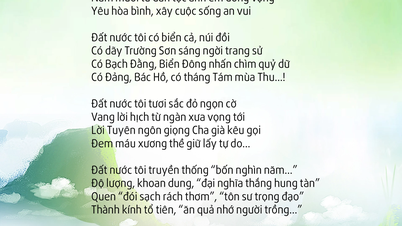
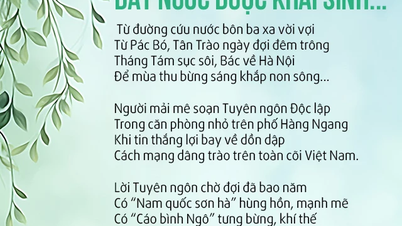














Comment (0)